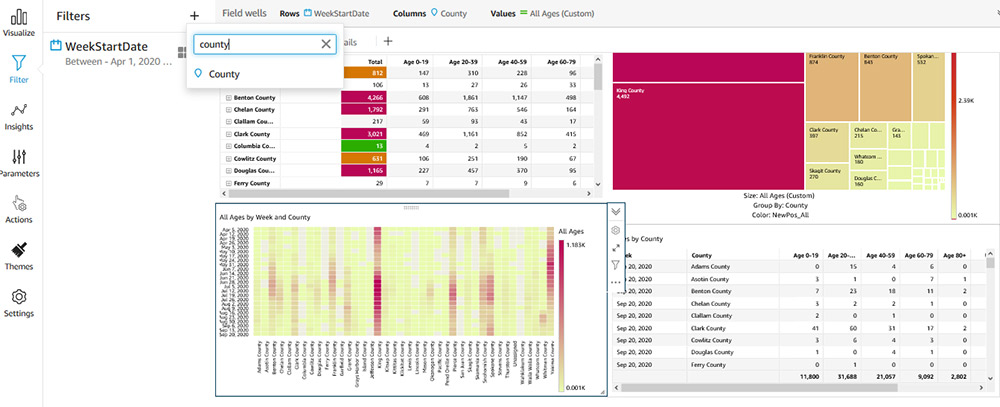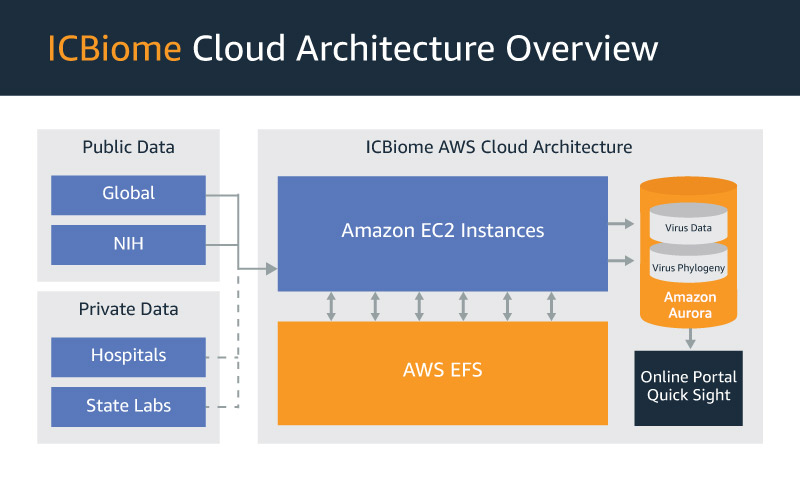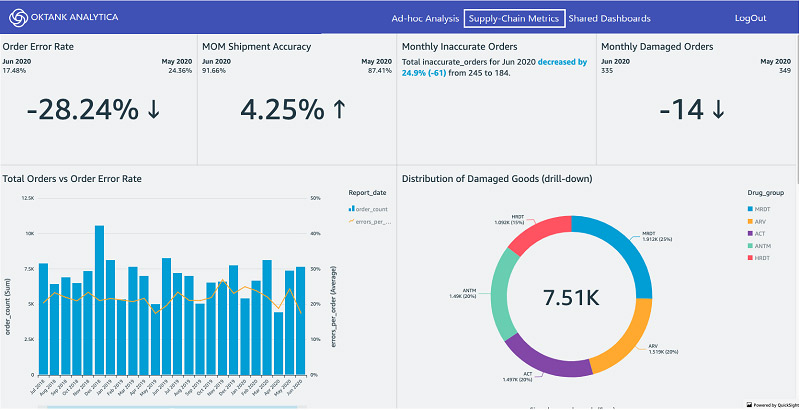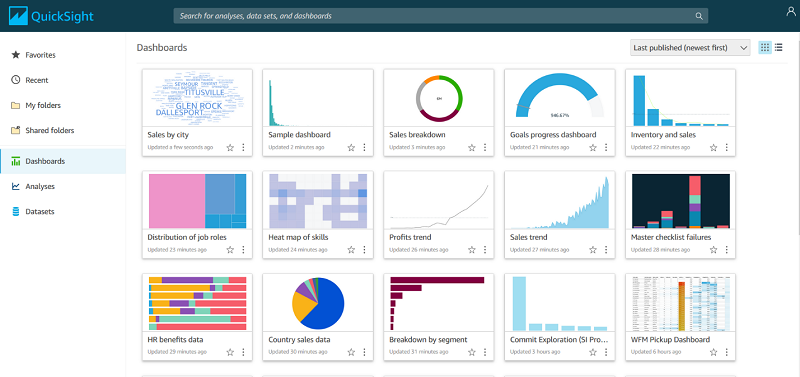AWS Big Data Blog
Tag: Embedding
Using administrative dashboards for a centralized view of Amazon QuickSight objects
“Security is job 0” is the primary maxim of all endeavors undertaken at AWS. Amazon QuickSight, the fast-growing, cloud-native business intelligence (BI) platform from AWS, allows security controls in a variety of means, including web browsers and API calls. These controls apply to various functions, such as user management, authorization, authentication, and data governance. This […]
Amazon QuickSight adds support for on-sheet filter controls
Amazon QuickSight now supports easy and intuitive filter controls that you can place beside visuals on dashboards, allowing readers to quickly slice and dice data in the context of its visual representation. You can create these filter controls from existing or new filters with a single click, and configure them to support different operations, such […]
ICBiome uses Amazon QuickSight to empower hospitals in dealing with harmful pathogens
In response to the COVID-19 pandemic, hospitals and healthcare organizations are increasingly employing genetic sequencing to screen, track, and contain harmful pathogens. ICBiome is a startup that has been working on this problem for several years, creating innovative data analytics products using AWS to help hospitals and researchers address both community-associated and hospital-acquired infections. Building […]
Enabling Amazon QuickSight federation with Azure AD
Customers today want to establish a single identity and access strategy across all of their own apps, such as on-premises apps, third-party cloud apps (SaaS), or apps in AWS. If your organization use Azure Active Directory (Azure AD) for cloud applications, you can enable single sign-on (SSO) for applications like Amazon QuickSight without needing to […]
Bringing the power of embedded analytics to your apps and services with Amazon QuickSight
In the world we live in today, companies need to quickly react to change—and to anticipate it. Customers tell us that their reliance on data has never been greater than what it is today. To improve your decision-making, you have two types of data transformation needs: data agility, the speed at which data turns into […]
How Aruba Networks built a cost analysis solution using AWS Glue, Amazon Redshift, and Amazon QuickSight
February 2023 Update: Console access to the AWS Data Pipeline service will be removed on April 30, 2023. On this date, you will no longer be able to access AWS Data Pipeline though the console. You will continue to have access to AWS Data Pipeline through the command line interface and API. Please note that […]
Automate dataset monitoring in Amazon QuickSight
Amazon QuickSight is an analytics service that you can use to create datasets, perform one-time analyses, and build visualizations and dashboards. In an enterprise deployment of QuickSight, you can have multiple dashboards, and each dashboard can have multiple visualizations based on multiple datasets. This can quickly become a management overhead to view all the datasets’ […]
Organize and share your content with folders in Amazon QuickSight
QuickSight folders provide a powerful way for admins and authors to organize, manage, and share content while being a powerful discovery mechanism for readers. Folders are now generally available in QuickSight Enterprise Edition in all supported QuickSight Regions.
Embed multi-tenant analytics in applications with Amazon QuickSight
Amazon QuickSight recently introduced four new features—embedded authoring, namespaces for multi-tenancy, custom user permissions, and account-level customizations—that, with existing dashboard embedding and API capabilities available in the Enterprise Edition, allow you to integrate advanced dashboarding and analytics capabilities within SaaS applications. Developers and independent software vendors (ISVs) who build these applications can now offer embedded, […]
Enable fine-grained permissions for Amazon QuickSight authors in AWS Lake Formation
This post demonstrates how to extend the Lake Formation security model to QuickSight users and groups, which allows data lake administrators to manage data catalog resource permissions centrally from one console. As organizations embark on the journey to secure their data lakes with Lake Formation, having the ability to centrally manage fine-grained permissions for QuickSight authors can extend the data governance and enforcement of security controls at the data consumption (business intelligence) layer. You can enable these fine-grained permissions for QuickSight users and groups at the database, table, or column level, and they’re reflected in the Athena dataset in QuickSight.









